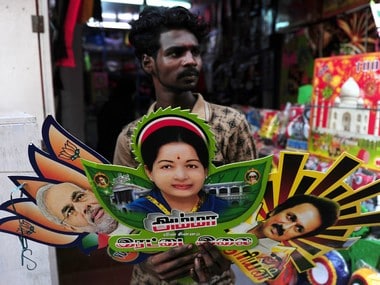Outwardly, the results of the exit polls in both in Kerala and Tamil Nadu aren’t surprising because they follow the historical trend of alternating governments and the unavoidable burden of anti-incumbency. However, on a closer look, both the United Democratic Front (UDF) in Kerala and AIADMK in Tamil Nadu have something to worry about. In Tamil Nadu, besides the alternating governments, there is one more interesting trend: the party/front that wins the Lok Sabha elections necessarily loses the next assembly election. This time Kerala is also poised to follow this trend. Let’s look at Kerala first. The exit poll results in the state are not surprising. Firstly because of the people’s electoral habit of keeping the ruling front away for five years however good a government it was, and also this time there was a visible wave against the ruling UDF. In the first few years of its rule, it was doing well as the results of the two by elections for state assembly and the Lok Sabha elections demonstrated. However by the time the local body elections rolled in, not only did it begin to falter, it really started tripping. In more than 60 percent of the local bodies, the LDF won and the UDF never recovered since then. The BJP had also made some considerable inroads into an otherwise bipolar state. In fact, this was also the time the government began sinking in scandals and factional fight, both within the UDF and the Congress. While the UDF partners went somewhat rogue, the Congress, the captain of the UDF, was literally plodding under the weight of corruption and internal fights. In the worsening mess of scandals, three leaders of the Congress, the Chief Minister Oomen Chandy, the Home Minister Ramesh Chennithala, and the Kerala Pradesh Congress President VM Sudheeran were fighting, not for the success of their party, but amongst themselves. It’s impossible to buck the trend when one is at such a disadvantage. Oomen Chandy scored well early on with his public programmes. He sought to solve people’s grievances on the spot. He worked tirelessly, spent most of his time at work and with the people. He was emerging as a unique leader, quite akin to Bihar’s Nitish Kumar. (Even today, after VS Achuthanandan, he is the most popular CM candidate). The state made good roads, bridges and began several landmark infrastructure projects. [caption id=“attachment_2784752” align=“alignleft” width=“380”]
 Representational image. AFP[/caption] But, all the goodwill and equity that he created were washed away by the ‘solar scandal’, in which he himself appeared to be one of the central characters, and the ‘bar bribery case’ that felled the senior most minister of his cabinet, KM Mani. There were many accusations, where the state opposition and most of the state’s electronic media set out to prove that everything his government did had graft and kickbacks. What should be more worrying for the Congress, is not the mere loss of power, but the fact that it lost after the emergence of the BJP and the BDJS. The latter is a brand new party led by a prominent community leader of the Ezhava caste which is the majority among the Hindus. It was evident that the BJP, with the support of the BDJS, would ramp up its vote-share, possibly up to 18 per cent, and these votes would leak from both the UDF and the LDF. Since the BJP-BDJS votes are purely Hindu, conventional wisdom makes one think that LDF will take a bigger hit because about 60 percent of the Hindus in the state back them. But what seems to be happening at the grassroots is exactly the opposites — the BJP-BDJS is eating into the meagre Hindu support base of the UDF and the Congress. It’s a very very bad sign and can weaken the Congress and the UDF on a more permanent basis.
The results of the exit polls in both in Kerala and TN aren’t surprising because they follow the historical trend of alternating governments and the unavoidable burden of anti-incumbency.
Advertisement
End of Article


)
)
)
)
)
)
)
)
)



